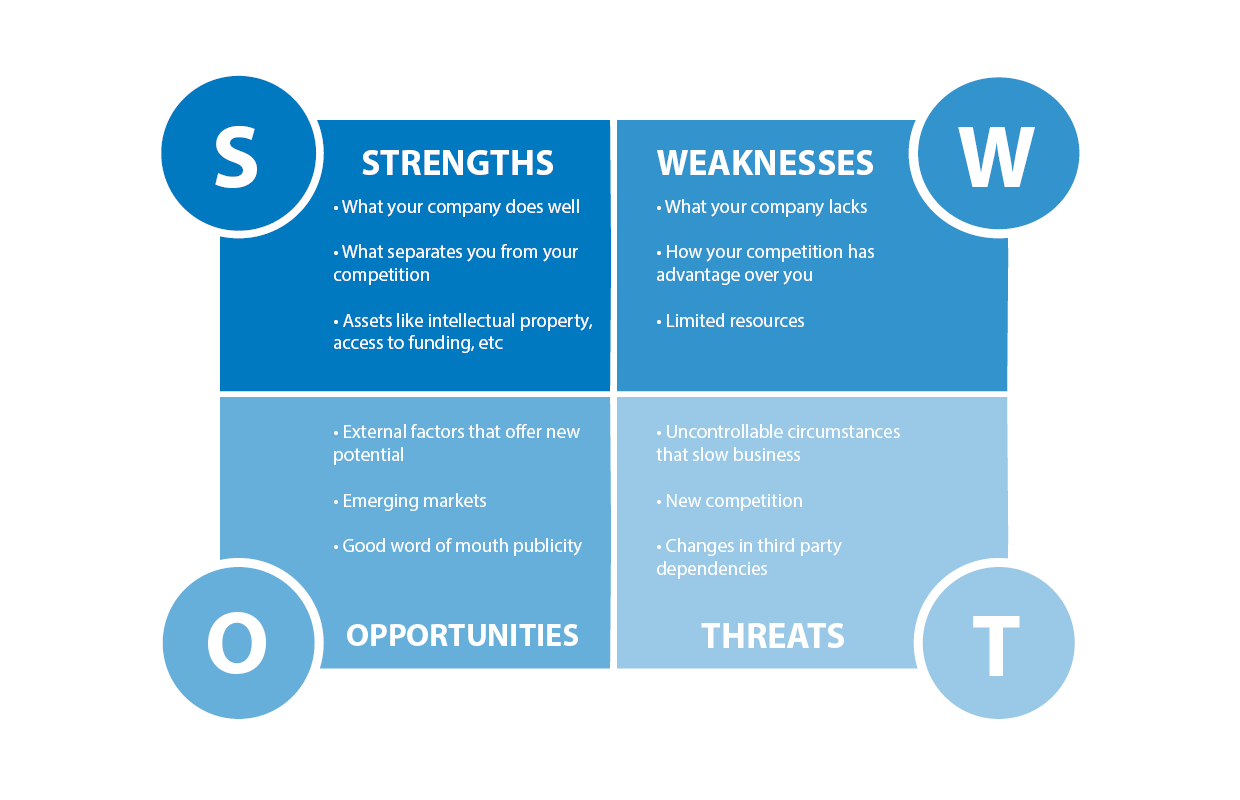REFERRAL PERKS®
For a limited time, earn $200* for you and your friend for every successful referral.
For a limited time, earn $200* for you and your friend for every successful referral.
Learn how an FHSA helps you save for your first home faster.
Learn which savings option is the best for your financial goals.
Explore this step-by-step complete guide to starting a business in British Columbia.
We’ve rounded up 10 of the most common scams — along with ways to identify and outsmart them.

Often the simplest things are the most powerful. A SWOT analysis is just that: an indispensable tool that can help you point your business in the right direction. It offers a bird’s eye view of your business and can provide insight to problems and solutions that you hadn’t noticed were right in front of you.
Ever heard the saying “you can’t see the forest for the trees?” A SWOT Analysis is the perfect way to see both.
Very simply, SWOT stands for Strengths, Weaknesses, Opportunities, and Threats.

There is no universal answer to any of these questions. Nor is there a specific list you can pull from to get your answers. Strengths can tend to be general: financial backing, brand awareness, etc. But opportunities and threats are specific to your business: if you run a dog grooming business, your opportunities are going to look a lot different than a business that designs large-scale excavation machinery.
By clearly defining strengths, weaknesses, opportunities and threats, the decision makers of a business can focus efforts to take advantage of positives and understand where a business needs to put resources to improve (or simply what to avoid!). The SWOT analysis can help in all facets of a business: marketing; production; leadership; service; financial; and more.
To illustrate a SWOT analysis, let’s use the dog grooming business as an example. This is a hypothetical look at the Strengths, Weaknesses, Opportunities and Threats of Steve’s Pup Preeners.
Any new business should do a SWOT Analysis early on. It doesn’t have to be a long, drawn-out series of meetings: you should be able to complete it within a couple of hours, if not less.
Be sure to include owners and leaders in the conversation. It is recommended that you bring employees into the discussion as well. They may see things in a different light. As a business owner, definitely don’t try to do it on your own!
We recommended that everyone in the meeting is given small notepads and writes down 3-5 words or phrases that relate to each section: Strengths; Weaknesses; Opportunities; and Threats. Once complete, make piles for each section and have everyone put their notes in the respective pile. It’s often best to then stick the notes on a whiteboard or wall so everyone can see them. You will likely see common threads through each section — you may also see entries you hadn’t thought of. Now it is time to have a discussion and agree upon 3-5 entries per section. Your SWOT analysis is taking shape…
By identifying your strengths, you can see where you can put pressure and expect results. If your business is focussed on bleeding-edge tech, you better have some people on board who have the knowledge and skills in that constantly-evolving industry. If your business needs new infrastructure to grow, do you have the financial means to make it happen? If not, do you have the contacts required to attract investors?
Now that you have your SWOT analysis, what happens next? Now is the time to act on your findings. What is most important is to focus on pairing your strengths with your opportunities, and turning your weaknesses into strengths. Threats are something to be aware of — but mostly so you avoid them or pre-empt them from being bigger threats than they already are.
Using Steve’s Pup Preeners as an example, Steve should consider promoting his business at the new condominium building up the street. Since Steve isn’t good at self-promotion, it would be a good idea to hire someone to design a flyer for him and be sure it is prominently displayed in the lobby of the new condo and offer new customers a discount on their first visit.
In the case of Steve’s lack of expertise in promotion, just because a weakness is identified doesn’t mean it can’t be turned it into a strength. Steve will never be good at talking about himself; but by hiring someone who is good at it, his business is bound to flourish.
A SWOT analysis is something that should be done with some regularity. Businesses evolve and new opportunities come on the horizon. How often you do a SWOT analysis depends on your business but we recommend taking a fresh look every 6 months to a year in order to stay on track or shift your focus on new strengths and opportunities.
Now get analyzing!
Related Reading: The Ultimate Guide To Starting A Business In BC
Everything is easier with a little help.
We acknowledge that we have the privilege of doing business on the traditional territory of First Nations communities.
© First West Credit Union. All rights reserved.
Proudly Canadian